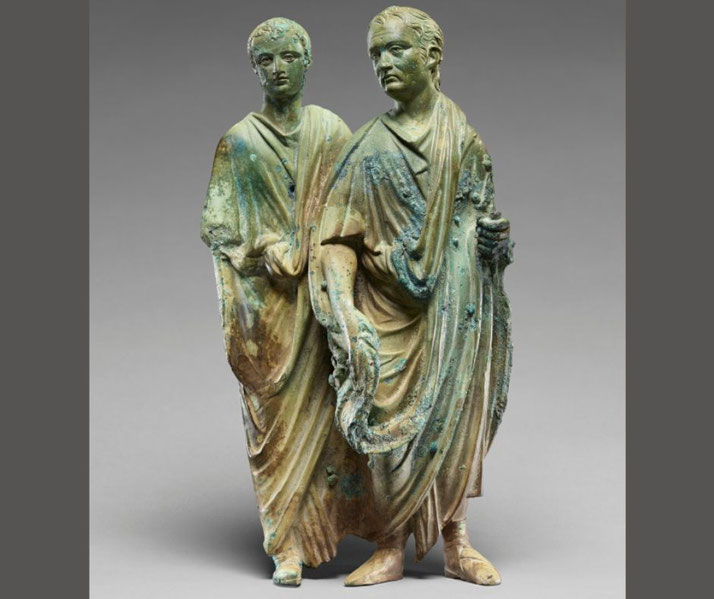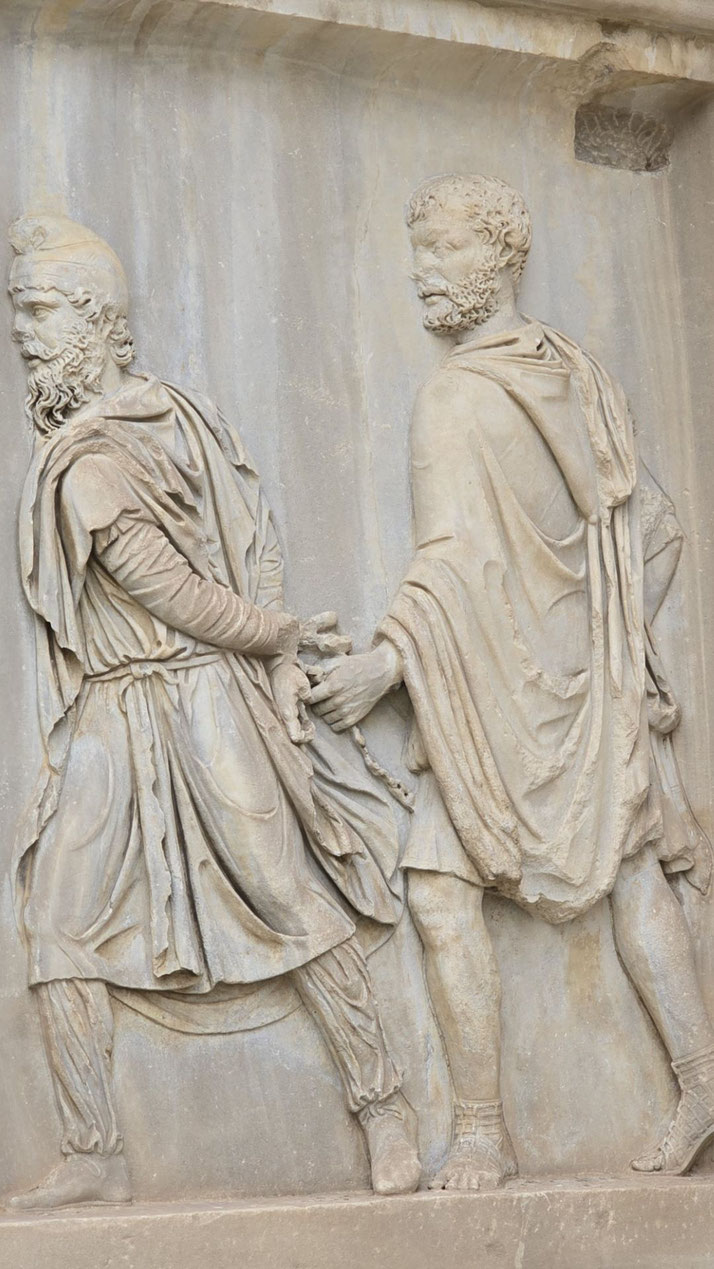Pants off! The Roman emperor who banned people from wearing trousers.

In the late Roman Empire, clothing was a powerful symbol of identity, status, and cultural affiliation. When Emperor Honorius ascended to the throne, the Western Roman Empire was grappling with internal strife and external threats.
Amidst this tumultuous backdrop, Honorius made a seemingly peculiar decision: he banned pants. To the modern observer, such a decree might seem trivial or even comical.
However, in the context of the time, it was a significant political and cultural statement.
Understanding the political power of Roman clothes
Long before Honorius' reign, Roman attire had evolved as a reflection of the empire's values, social structures, and cultural influences.
The toga, perhaps the most iconic piece of Roman clothing, was reserved for Roman citizens and was often worn as a symbol of status and privilege.
Its draped design and specific manner of wearing were indicative of one's position in society, with variations denoting everything from political office to mourning.
Women, on the other hand, typically donned the stola, a long dress worn over a tunic, which was both a mark of femininity and modesty.
As the Roman Empire expanded, it came into contact with various cultures, each with its own distinctive style of dress.
These interactions led to a gradual incorporation of foreign elements into Roman fashion.
For instance, the synthesis of Hellenistic styles resulted in the adoption of the chiton, a type of tunic.
However, while the Romans were open to adopting certain foreign garments, they were also keenly aware of maintaining a distinct Roman identity.
This balance between openness to external influences and a desire to preserve tradition set the stage for the controversies and decisions surrounding attire during Honorius' time.

Why did Honorius become concerned with clothes?
Honorius, born in 384 AD, ascended to the throne as the Western Roman Emperor in 395 AD, following the death of his father, Theodosius I.
His reign, which lasted until his death in 423 AD, was marked by a series of challenges that threatened the very fabric of the Western Roman Empire.
From the outset, Honorius' rule was overshadowed by the guiding hand of Stilicho, a half-Vandal general who served as the young emperor's regent and protector.
Under Stilicho's guidance, the empire navigated through a series of external threats, most notably the Gothic War which culminated in the infamous sack of Rome by the Visigoths under King Alaric in 410 AD.
While the empire faced external adversaries, internal strife was equally problematic.
The relationship between Honorius and Stilicho became strained, leading to the latter's execution in 408 AD on charges of conspiracy.
This decision, driven by court intrigues and Honorius' increasing paranoia, weakened the empire's military leadership at a critical juncture.
In addition to the military and political challenges, Honorius' reign was also marked by significant cultural and societal shifts.
The empire's vast territories and interactions with various 'barbarian' tribes led to a blending of cultures, which was reflected in everything from art to attire.
Why Honorius banned pants
Pants, or trousers, became a focal point of this symbolic battleground. Originating from regions outside the empire, particularly among the Germanic and Persian tribes, trousers were seen as the attire of 'barbarians'.
Their design, suited for horseback riding and colder climates, was a stark contrast to the draped garments traditionally associated with Roman fashion.
As the empire expanded and interacted with these 'barbarian' cultures, the adoption of trousers within its borders grew, especially among soldiers stationed in colder regions and those who had frequent interactions with tribes that wore them.

Their practicality was undeniable, offering warmth and mobility. Yet, as their popularity grew, so did the controversy surrounding them.
For Honorius and the Roman elite, the growing popularity of pants represented a concerning erosion of traditional Roman values and identity.
The trousers were seen as a symbol of foreign influence, a stark reminder of the empire's vulnerabilities and the encroaching 'barbarian' cultures.
By banning them, Honorius aimed to reinforce a distinct Roman identity and draw a clear line between the empire and its external adversaries.
The specifics of the ban were clear: pants were prohibited within the city of Rome and, by extension, throughout the territories of the Western Roman Empire.
Those found in violation faced penalties, which ranged from fines to more severe punishments.
How was this law enforced?
Honorius' edict against pants was met with a mixed bag of reactions across the Western Roman Empire.
In the heart of Rome, where traditional values and appearances were staunchly upheld, many of the elite and conservative factions lauded the decision.
They viewed it as a necessary step to preserve the Roman way of life and curb the influence of foreign cultures.
To them, the ban was a reaffirmation of Roman superiority and a rejection of 'barbarian' customs.
However, in the empire's far-flung provinces and among the lower classes, the response was less enthusiastic.
Many saw the ban as an impractical imposition, especially for those living in colder regions where trousers were not just a fashion choice but a necessity.
Soldiers, who had adopted pants for their utility in various terrains and climates, were particularly disgruntled.
They viewed the edict as out of touch with the realities they faced on the frontiers.
Enforcing the ban was another challenge altogether. While in Rome and major cities, officials could monitor and penalize those wearing trousers, in the vast stretches of the empire, consistent enforcement was nearly impossible.
Local officials, understanding the impracticalities and potential unrest the ban could cause, often turned a blind eye.
Moreover, the sheer expanse of the empire and the diversity of its inhabitants meant that a one-size-fits-all approach was untenable.
Over time, while the edict remained in place on paper, its enforcement waned.
The practicalities of daily life, combined with the empire's broader challenges, pushed the trouser ban lower on the list of priorities.
What do you need help with?
Download ready-to-use digital learning resources
Copyright © History Skills 2014-2025.
Contact via email
With the exception of links to external sites, some historical sources and extracts from specific publications, all content on this website is copyrighted by History Skills. This content may not be copied, republished or redistributed without written permission from the website creator. Please use the Contact page to obtain relevant permission.





